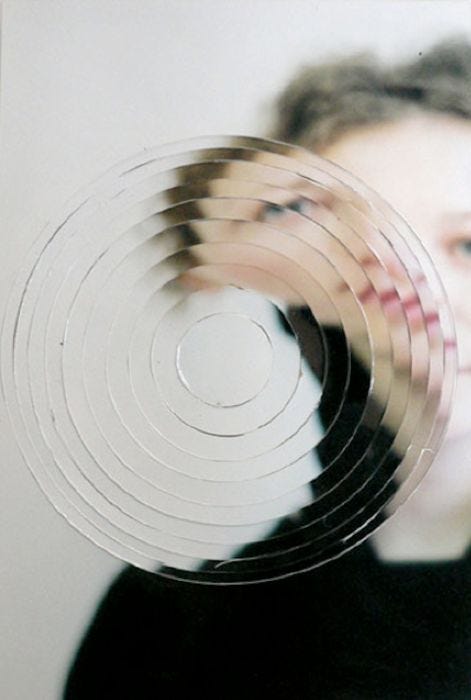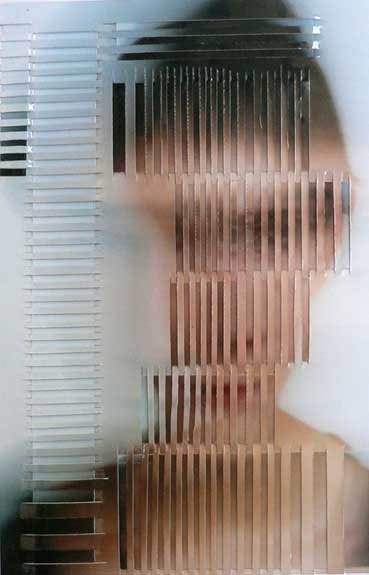time, phenomenology, and pratyahara
ruminations and elucidations on the elusive state of timelessness



During Savasana (and, more often, during that strange post-floatiness of EDMR therapy), I consider the slow morphing of the montage memory—how these mirages of the past pulse and undulate and take new perceptual dimensions over and over and over again as we see them (feel into them, touch them, embody them) through new eyes (sensational wisdom, overlaying of discovered textures, expansion of flavor palette, the fullness of new aches and new pleasures). I think of Audrey’s grinning face tilted towards the Acadian sunset or the days spent weeping by the roaring ocean in Brazil or tripping mushrooms in the Savannah cemetery with the ghosts (of past and of grave).
I gaze back at the past, and the tunnel funnels in and out like I’m gazing down the unending void of a snake’s throat; her tongue is spongy and uncertain. This slick ground beneath our [my?] feet is never firm. It falls and rolls and vibrates in synchronicity to time.
How do I narrate my own experience of time? How do I channel this abstract—yet so very real, so very subjective, so very universal—Thing into a material, shareable locus for understanding that exists on this dimensional plane? For that’s all art is—the impossible, the ungraspable translated into a tangible, perceivable form. This is certainly the phenomenological perspective: that art must derive from what we describe or inform of as the five senses.
In Buddhism, āyatana translates to “sense base”, “sense-media” or “sense sphere.” The anchoring translation here of sense sphere is most remarkable to me for its ability to encapsulate the notion that while the senses can expand our awareness of our situated body, there are limitations which naturally bind us to a bubble of subjectivity. Germans call this the umwelt—that is, an animal’s bespoke sliver of reality. A tick’s umwelt is limited to the touch of hair, the odor that emanates from skin, and the heat of warm blood. A human’s umwelt is far wider but doesn’t include the electric fields that sharks and platypuses are privy to, the infrared radiation that rattlesnakes and vampire bats track, or the ultraviolet light that most sighted animals can perceive.
Thus, how are our psychological sensorial capacities funneled into the realm of artistic creation? By the standard of Jakob von Uexküll (he who coined the term umwelt), Kantian constitutive spheres of space and time are special conditions that vary not only cross-species but also between human organisms. Essentially, time is experienced differently by all breathing entities. It is not how time is perceived objectively, but how it is perceived experientially—the differing ways of contracting time and space as you move through it and as it moves through you.
In Phenomenology of Perception, Maurice Merleau-Ponty prefaces, “All my knowledge of the world, even my scientific knowledge, is gained from my own particular point of view, or from some experience of the world without which the symbols of science would be meaningless” (ix). His text unfolds to acutely describe the existential anxieties that come with being trapped in one’s own body, constrained to the bounds of human perspective; we perceive with our five senses, and it is through these mediums that we gain knowledge of the world—and thus have contextual reference points for the memories we hold within us.
Accordingly, in Buddhism there is a sixth sense: mano. Mind denotes an internal sense organ which interacts with sense objects that include sense impressions, feelings, perceptions and volition. It is the way in which we translate our worldly impressions (informed by our sensorial organs) into a narrative. In this sense, the past and the future are merely stories that we tell ourselves.
Pali subcommentaries distinguish from this consciousness that arises from the sense organs and the consciousness that derives from the life-continuum, or the unconscious mind—that which is without ego nor identity (also enmeshed within the narrative we tell ourselves). Awakening our awareness towards this mano that stands independent of āyatana must involve the cultivation of pratyahara, the fifth limb to Ashtanga.
Pratyahara is drawing within one’s awareness. It is a process of retracting the sensory experience from external objects. It is a step of self extraction and abstraction. Pratyahara is not consciously closing one’s eyes to the sensory world; it is consciously closing one’s mind processes to the sensory world. Pratyahara empowers one to stop being controlled by the external world, fetch one’s attention to seek self-knowledge and experience the freedom innate in one’s inner world.
Pratyahara, thus, is my escape from being digested into the bowel of the snake.
*
My body is a temple. I endure this truth both metaphorically and as an intrinsic truth to my existence. I wrap my limbs through space, my blood pulses in tune to time, and my energy—my prana—expands and expands and expands until it snaps like a rubber band and it is just me sitting inside my skull without the illusive phenomena that pertains to the plane in which you and I meet.
I inhale, god approaches me; I retain my inhale, god stays with me; I exhale, I approach god; I retain my exhale, I stay with god. I stretch my exhale for eternity, and I am with god for eternity in the bliss that is without time.





